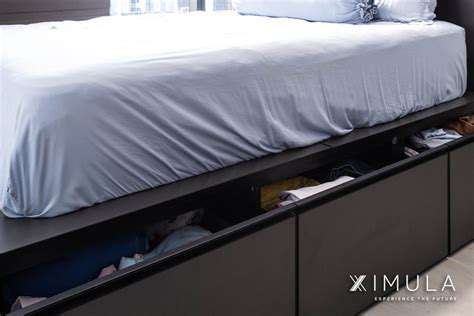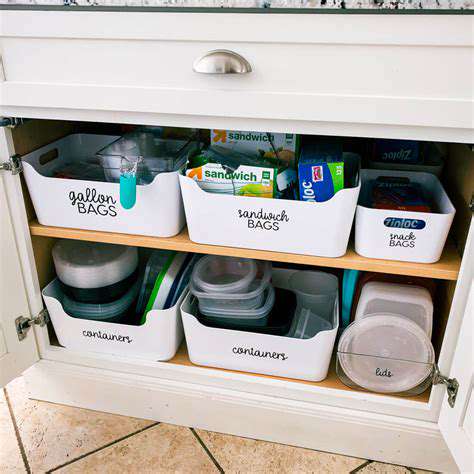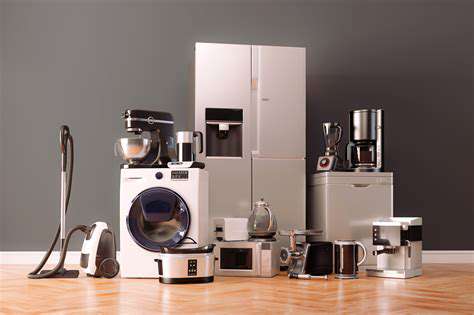Optimize Your Kitchen Space with Clever Workflow and Storage Ideas
Complete Guide to Optimizing Kitchen Space
Three-Dimensional Storage for a Fresh Kitchen
Smart Use of Wall Shelves
Installing a multifunctional shelf on the kitchen wall is like giving your kitchen wings—taking up no floor space while making commonly used spices and utensils within easy reach. I once saw at a friend's house that they hung a cast-iron pot on a vintage iron shelf, which was both practical and became a visual focal point. Remember to use a level when installing; a tilted shelf is not only unsightly but also prone to dropping items.
Utilizing Hidden Space Behind Doors
That often-overlooked inside of the cabinet door, after installing a storage rack behind the door, finally provided a dedicated spot for plastic wrap, aluminum foil, and kitchen paper towels. In practice, a 15 cm deep shelf installed behind the door is just right, so the door doesn’t get stuck when opened and closed. It’s advisable to choose PP material as metal ones tend to make noise when the door is opened and closed.
Floor-to-Ceiling Storage Cabinets
When I helped my neighbor renovate the kitchen last month, we specifically made a tall cabinet. The top shelf is for baking trays used only during holidays, the middle for commonly used small appliances, and the bottom for pull-out hardware. A girl who is 160 cm tall can easily reach items on the top shelf. Just remember that the cabinet depth should not exceed 35 cm, as deeper ones tend to waste space.
Hanging Pot System
During a visit to a culinary classroom last week, I noticed their copper pots were hung on a retractable rod. Upon returning home, I immediately modified my kitchen, so now I can grab the wok without bending over to search, and I can hang it up to dry after cleaning for better hygiene. Make sure to keep the hanging rack at least 60 cm away from the stove to avoid grease buildup.
Improving Cooking Efficiency with Workflow Planning
Golden Triangle Work Zone
During my home renovation, I arranged the refrigerator, sink, and stove in a triangular layout, with each side measuring between 1.2 and 1.8 meters. Now, the movement distance while cooking is reduced by 40%, which is especially beneficial when preparing multiple dishes simultaneously. It’s recommended to set up a temporary counter next to the refrigerator, making it super convenient to place groceries right after shopping.
New Thinking on Vertical Storage
I learned a great tip at a Japanese home exhibition: adding a magnetic spice rack to the bottom of the hanging cabinets. Now, I can easily grab spices while cooking without turning around to search for them. In practice, installing three layers of 15 cm deep shelves on a 30 cm wide wall can hold 50 spice jars.
Transformable Furniture to Solve Space Issues

The Transformation of Furniture
The new retractable island table I purchased has transformed my 6 square meter kitchen: it can shrink to 60 cm wide for breakfast prep and extend to 1.2 meters for family meals. Select a style with swivel wheels for easy movement during cleaning. The hooks on the side can also hold aprons and oven mitts.
Shopping Tips
- For folding tables, it is recommended to choose beech wood to ensure good load-bearing capacity and resistance to deformation.
- Bar stools with storage functionality can hide 6 bottles of wine under the cushion.
- Magnetic knife holders can double as recipe holders, being both safe and practical.
Building a Smart Storage System

Philosophy of Transparent Storage
After switching to standardized transparent storage boxes, I found that the consumption rate of grains was faster—because what is visible doesn’t get forgotten. It is advisable to buy styles with handles, as they can be easily pulled out even when stacked three layers high. We conduct an inventory of ingredients on the 15th of each month, which has reduced expired items by 70%.
Aesthetic of Labels
I created waterproof labels using my brother's mistake printer, marking them in both Chinese and English along with expiration reminders. I unexpectedly found that categorizing by color (red labels for spices, green for dried goods) made it faster to find items. A little tip: use erasable labels to note opening dates for more accurate management.
Smart Appliance Upgrade Guide

Sharing Real Experiences
The new smart steam oven has completely changed my baking approach: I can schedule fermentation via my phone, and the built-in camera allows me to monitor baking progress, so I never burn cookies anymore. However, be aware that networked devices need regular firmware updates; after the last system upgrade, 30 new Chinese dessert recipes were added to the recipe library.
Shopping Pitfall Avoidance Guide
- A fridge with AI recognition shouldn't have touch screens on the right side—it's prone to accidental touches when opening the door.
- Choose dishwashers with a three-arm spray system, as they enhance cleaning power by 40% compared to two-arm ones.
- For smart switches, select those with Zigbee protocol, which can be controlled locally even when the network is down.
Read more about Optimize Your Kitchen Space with Clever Workflow and Storage Ideas
Hot Recommendations
- Design a Modern Bathroom That Maximizes Space and Minimizes Risks
- Creative Living Room Ideas for Seamless TV Wall Integration and Dynamic Lighting
- Planning a Living Room with Impactful TV Backgrounds and Seating Options
- Innovative Bedroom Concepts to Transform Your Sleep and Storage Experience
- Modern Study Solutions for a Dual Purpose Office and Reading Area
- Modern Bathroom Ideas Featuring Wet Dry Separation and Safety Enhancements
- Expert Advice for Creating a Study That Supports Both Work and Personal Development
- Practical Bathroom Ideas for Enhancing Safety in Compact Areas
- Modern Children's Room Inspirations Focused on Color and Growth
- Creative Ideas for a Children's Room That Combines Safety with Modern Style

